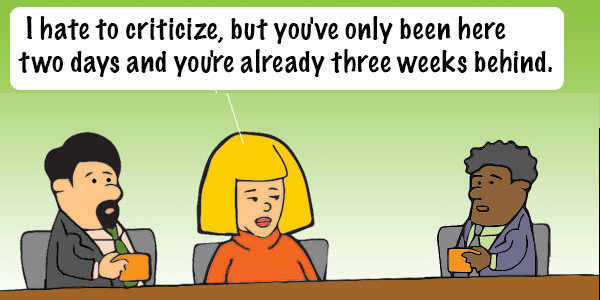September 8, 2019
Why Project Managers Rule the World

We are the executioners. ? We execute projects, establishing milestones, estimating days of work per resource, scheduling, estimating costs and expenditures and establishing return on investment. Great project managers create immense value for any company they work for. It is in their nature to complete projects and watch them launch. Some people have different titles like Producer, Show Runner, etc., but essentially they are all project managers. Many product managers are actually project managers, too, even though I personally consider them two very different things.
How do you become a great project manager?
There are numerous online courses and certifications one can complete that will teach you the nuts and bolts of project planning, but one skill is never really addressed — communication. A great project manager is an excellent communicator. They need to work across numerous departments to execute a project and keep people informed about progress (or lack thereof). Providing a rhythm of communications to inform, advise, escalate and seek approvals from all stakeholder groups is a primary key to a great project manager’s success.
Great project managers are creative AND analytical and that is asking a lot from any employee. The creativity usually comes from the experience of working on many projects and dealing with conflict, missed deadlines, and underperforming departments creating junk. Project managers need to learn how to “put lipstick on that pig” at least until launch, then clean out the junk. Creative problem solving is an aspect that is critical to innovation and good project managers always seek out the less obvious solutions because that’s where a lot of the magic happens.
At a firm I co-founded, we couldn’t afford to hire a team of ten programmers to build out our custom content management software for web sites. The founder and I left after lunch on a Friday afternoon, bought a big bottle of wine and worked through the night to figure out how we could accomplish the project. There were two “aha!” moments — one, when we realized that most of our components needed only three web pages: to show a list, a detail page, and a back end moderation page. Two, was once we realized that we only needed to code three pages instead of looking at all the components separately, we realized we could still ship in six months with two programmers. We still did not have money to pay even two programmers, so we decided to go for unpaid interns from masters programs in the Chicago area. They loved the idea of working on live products and were willing to work for free. We gave them great feedback and helped them find paid work after we completed the initial launch. We shipped in six months on schedule with nine different components.
The analytical side plays with spreadsheets and calendars, establishing dependencies and milestones, and reviewing the costs of the project to keep it within budget. The analytical side understands the importance to the following quote:
Price. Quality. Time. Pick any two.
As you get more experienced, you will realize that this axiom is very true. You cannot get a great quality project completed quickly without paying dearly for it. You cannot get good quality if you have no money and no time to get it done. You can get good quality at a decent price if you are willing to wait for it.
At one company I worked at early in my career, the local printer was quoting a price of around $3.75 each for a four-color coated stock 32-page full bleed brochure. A company out of Hong Kong could print the same exact document for 36 cents each. The issue? The brochures would need to be shipped by sea, meaning we would have them in 90 days, not next week like our local printer could. The company was practically broke, so we waited the 90 days. It was worth it. The catalogs were a smash and the number of orders doubled and the quantities in those orders tripled after we started using them.
How do you supervise a great project manager?
Get out of their way. Clear obstructions for them. Enable them to focus on the project and facilitate an open door policy for them to vent, rant, or escalate issues that are affecting their project. If the project is being shut down (could be a change in corporate strategy, a buyout, a new competitor in the landscape, perhaps a pet project of the CEO who is now bored and off onto something shinier; many things can happen to projects), listen to their concerns and seek to understand their point of view, then explain the situation as best you can. If you don’t have clarity, seek it out for them. They need to feel safe in discussing difficult topics and be able to depend on you to address their issues. Especially when the shutdown is out of their control (maybe the CEO decided you had to use his vendor who did a terrible job and now your project manager is being blamed for it), they will need support and some sort of idea about the safety of their position in the company and vision of where they go from here.
Whenever I hear a CEO or other executive talk about a project “being on autopilot”, it will inevitably insult the project manager. Great project managers make it look easy. When it looks easy from the outside, people think there’s not much to the work, but that is hardly the case. So give your project manager the recognition and support they need to carry on. The job is far more difficult than it looks.
